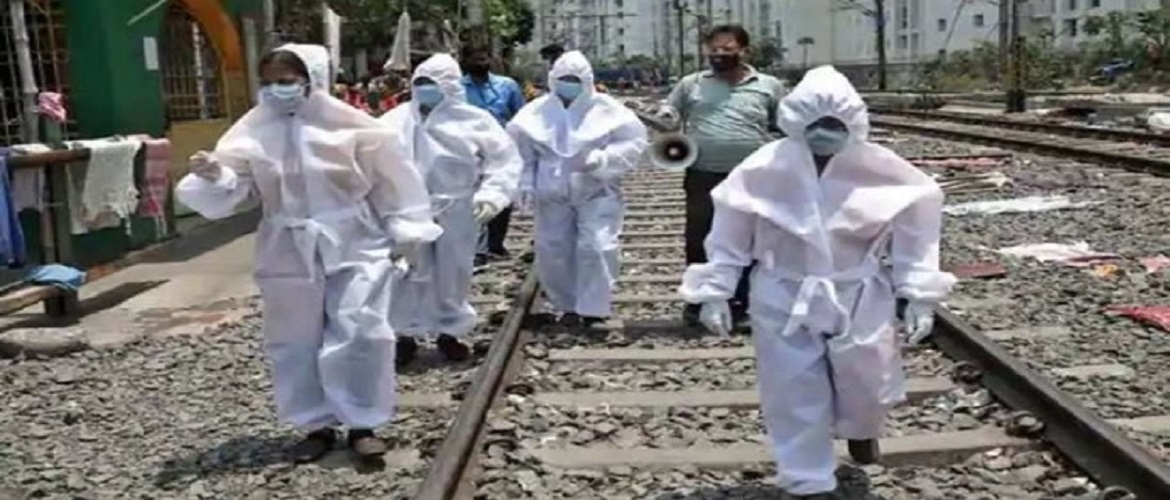NE India-COPING WITH THE PANDEMIC
November 10, 2020 | Expert Insights

While purely based on statistics, the ‘seven sisters’ of North East India figure at the bottom half of the ‘COVID pile,’ but in terms of suffering and disruptions, the pain is no less. Undoubtedly, the pandemic has compounded the disparities with mainland India; in health care, employment and job security, and the sense of being neglected by their better-placed compatriots.
At the beginning of the pandemic, the region hardly seemed affected. There were very few cases, and the country-wide lockdown worked as a cushion against migration. However, the easing of measures drastically changed the scenario.
Gradually the cases started spiking across the northeast — around 2,77,000 cases in Assam, 15,160 in Arunachal Pradesh, 19,503 in Manipur, 9,801 in Meghalaya, 2,958 in Mizoram, 9207 in Nagaland, 4067 in Sikkim, and 31237 cases in Tripura — aggregating to almost 300,000 cases (Aarogya Setu as on 06 Nov). This is alarming given that the region had only a little over 60 cases in May. Many of the new cases are attributed to migration fuelled by lockdown relaxation and job losses in bigger cities.
HEALTH DISPARITIES
Table A[1]
|
Rural Hospitals |
Urban Hospitals |
|||
|
No. |
Beds |
No. |
Beds |
|
|
Andhra Pradesh |
193 |
6,480 |
65 |
16,658 |
|
Gujarat |
364 |
11,715 |
122 |
20,565 |
|
Karnataka |
2,471 |
21,072 |
374 |
49,093 |
|
Tamil Nadu |
692 |
40,179 |
525 |
37,353 |
|
Uttar Pradesh |
4,442 |
39,104 |
193 |
37,156 |
|
Maharashtra |
273 |
12,398 |
438 |
39,048 |
|
Northeast |
||||
|
Arunachal Pradesh* |
208 |
2,136 |
10 |
268 |
|
Assam |
1,176 |
10,944 |
50 |
6,198 |
|
Manipur |
23 |
730 |
7 |
697 |
|
Meghalaya* |
143 |
1,970 |
14 |
2,487 |
|
Nagaland |
21 |
630 |
15 |
1,250 |
|
Sikkim* |
24 |
260 |
9 |
1,300 |
|
Tripura* |
99 |
1,140 |
56 |
3,277 |
|
Mizoram* |
56 |
604 |
34 |
1,393 |
India has a three-tier public health system: primary health care providers which comprise of sub-centres (PHC); community health centres (CHC), which comprises of sub-district hospitals; and tertiary health providers made up of district hospitals and medical colleges. From Table A it is clear that the NE states lag behind, a situation that may have ramifications that may be felt well after the pandemic. Especially worrying is the low number of better equipped and better-managed hospitals in urban centres which from experience it has been proved are better suited to handle complications arising from COVID-19.
RECOVERY RATES
Table B
|
Number of cases |
Recovery |
Recovery rate |
|
|
Tamil Nadu |
7,17,000 |
6,79,000 |
94.7 |
|
Maharashtra |
16,60,000 |
14,90,000 |
89.7 |
|
Karnataka |
8,13,000 |
7,34,000 |
90.2 |
|
Uttar Pradesh |
4,76,000 |
4,44,000 |
93.2 |
|
Gujarat |
1,70,000 |
1,53,000 |
90 |
|
Andhra Pradesh |
8,15,000 |
782000 |
95.9 |
|
Northeast |
|||
|
Manipur |
17,809 |
13,420 |
75.3 |
|
Meghalaya |
9,226 |
7,777 |
84.2 |
|
Sikkim |
3,875 |
3,545 |
91.4 |
|
Tripura |
30,566 |
28,525 |
93.3 |
|
Assam |
2,05,000 |
1,93,000 |
94.1 |
|
Nagaland |
8,824 |
6,945 |
78.7 |
|
Arunachal Pradesh |
14,580 |
12,480 |
85.5 |
|
Mizoram |
2,656 |
2,238 |
84.2 |
The pandemic has gone against the accepted norms that higher-income countries suffer less in large scale contagion because of their superior health care systems. In the case of COVID 19, some of the richest countries like the U.S., the UK, France, Spain and Italy have been the worst sufferers, and low-income countries like Sri Lanka, Vietnam and even Pakistan seemed to have recovered much faster.
However, in the longer run, a better health care system is critical to ensure that long term and lasting effects of the pandemic do not impact on a larger portion of the population. For that reason, the comparative lower recovery rate of patients in NE India, as shown in Table B above, should be a cause for concern. For the most part, other States seem to have a 10 percent higher recovery rate than the north-eastern states.
The huge cost burden in availing the services of a limited number of private hospitals and the poor condition of government hospitals aggravates the threat of the pandemic. People infected with the virus may put off seeking medical attention till symptoms become dire.
JOB INSECURITY
The pandemic has wreaked havoc on the local economy as well. A majority of the jobs available in the region are in the informal sector, and any crisis upsets the already shaky apple cart. There have been alarming levels of unemployment and heightened job insecurity in the region. According to the Centre for Monitoring Indian Economy (CMIE), the monthly unemployment rate in the northeast was over 18 per cent in October. While some states like Assam have fared better, while smaller states have been more affected.
It is hoped the Union Government's relief package for the informal sector will benefit the more than 80 per cent of citizens who earn their livelihood from this informal sector (National Center for Biotechnology Information, 2020).
CONCLUSION
The pandemic has had a devastating impact on rural areas, and since 80 per cent of the northeast falls under this category, the ramifications on healthcare, unemployment and livelihoods have been vast. Though the government has made efforts to alleviate some of the burden, the effectiveness of these efforts may be a challenge.








Comments